multifamily industry trends
Empowering Leadership through Words: The Transformative Power of Language in Building Personal Brands

Photo by Brett Jordan on Unsplash
Rudyard Kipling’s insight into the power of words resonates profoundly in the realm of leadership, particularly in the multifamily industry. Words are not merely communication tools but catalysts for change, influencers of perception, and builders of worlds. For leaders in the multifamily space, the strategic use of language is pivotal in crafting a personal brand that resonates with their audience and professional ethos.
The Impact of Language on Leadership
The multifamily industry demands leaders who can articulate a vision and inspire action. In this context, words serve as a bridge between the conceptual and the tangible. When leaders communicate effectively, they do more than convey information; they evoke emotions, inspire trust, and foster community. This emotional resonance is critical in an industry where relationships and networks are paramount.
Building a Personal Brand through Words
In the digital age, personal branding for leaders in the multifamily space is no longer optional. It’s a strategic imperative. A leader’s brand is a unique blend of skills, experiences, and values communicated consistently across various platforms. Here, words become the primary currency. Through blogs, podcasts, social media, and speeches, leaders can craft a narrative that showcases their expertise, values, and vision. But, it should be driven from the heart, not from a self-serving perspective.
The Role of Storytelling in Leadership
Storytelling, an ancient art, finds new life in the digital era. For multifamily leaders, storytelling is a tool to connect with their audience more deeply. Leaders can humanize themselves by sharing personal experiences, challenges, and triumphs, making their messages more relatable and impactful. This approach strengthens their personal brand and fosters a culture of openness and authenticity within their organizations.
The Influence of Language on Organizational Culture
The words leaders choose directly influence the culture of their organizations. Language shapes reality, and the narratives leaders create can either foster a culture of innovation, collaboration, and respect or sow discord and disengagement. In the multifamily industry, where fostering a positive community is critical, the impact of language on organizational culture cannot be overstated.
Communicating Vision and Values
Influential leaders in multifamily are visionaries who can articulate a clear and compelling future. They can align their team’s efforts with the organizational mission and values through their words. This alignment is crucial for maintaining a coherent and focused approach to challenges and opportunities in the industry.
The Digital Landscape and Language
In an era where digital communication is ubiquitous, how leaders in the multifamily industry express themselves online is critically important. Social media platforms, blogs, and podcasts offer unparalleled opportunities to reach a wider audience. However, they also require a nuanced understanding of language and its impact in different contexts. The digital realm amplifies words, making it essential for leaders to be deliberate and thoughtful in their communication.
Share this:
Embracing Challenges: How Multifamily Leaders Can Find Joy and Growth in Adversity

Photo by Suzanne D. Williams on Unsplash
The path to success is often paved with challenges and trials. However, it is in these very challenges that leaders can find profound growth, enjoyment, and satisfaction. Let’s dive into how embracing the struggle can lead to personal and professional growth, especially for multifamily leaders and business professionals.
The multifamily industry has unique challenges with team members, residents, vendor partners, and investors. Market fluctuations, resident relations, property management, and technological advancements are just a few of the hurdles leaders face. These challenges, while daunting, are also opportunities for growth and innovation.
The Psychology of Struggle and Satisfaction
At its core, the joy of struggle is rooted in the human psychological concept of ‘eustress‘ – a positive form of stress that enhances one’s functioning. For multifamily leaders, the right challenges can catalyze skill development and problem-solving skills. When a leader overcomes a difficult situation, it brings a sense of accomplishment and builds resilience.
Growth Through Adversity
Leadership, especially in a multifamily context, is about navigating difficulties and uncertainties. The trials in this journey are not mere obstacles but stepping stones to greater understanding and capability. Each challenge overcome is a lesson learned, contributing to a leader’s arsenal of experience and wisdom.
The Role of Innovation in Overcoming Challenges
In the multifamily space, innovation is critical to turning challenges into triumphs. Whether adopting new PropTech solutions or rethinking resident engagement strategies, innovative thinking can transform potential setbacks into opportunities for growth and differentiation in the market.
Building a Resilient Team Culture
Leadership is as much about guiding others as it is about personal growth. By embracing challenges, multifamily leaders set an example for their teams. This fosters a culture of resilience, where the entire team is equipped to handle and grow from adversities. Such a culture is invaluable in an industry where change is the only constant.
Personal Fulfillment in Professional Struggle
The satisfaction derived from overcoming professional challenges often translates into personal fulfillment. For multifamily leaders, the impact of their work on communities and individuals provides a more profound sense of purpose and joy. This fulfillment becomes a driving force, fueling passion and perseverance in the face of trials.
Share this:
Mastering Dual Promotion: The Art of Balancing Self-Advocacy with Empathy in Leadership Branding

Photo by Artem Beliaikin on Unsplash
In personal branding, particularly within the multifamily leadership space, navigating the tightrope between promoting one’s achievements and maintaining an image of warmth and approachability is a nuanced art. Recent research unveils an intriguing strategy: dual promotion. This technique intertwines self-promotion with the celebration of others, striking a balance that enhances a leader’s image in both competence and warmth.
The multifamily industry, driven by its community-centric ethos, particularly values leaders who exhibit solid capabilities and genuine concern for others. The conventional approach of self-promotion often raises a paradox. While it’s crucial to highlight one’s accomplishments to establish authority and expertise, overemphasis can project an air of arrogance or self-centeredness. Contrarily, though endearing, excessive modesty might undercut one’s perceived competence.
Emerging research encompassing a series of 11 studies sheds light on this conundrum. Dual promotion emerges as a compelling solution. By praising a colleague or a peer while discussing one’s own achievements, leaders can effectively demonstrate their capabilities without diminishing their warmth. This approach informs audiences about the leader’s abilities and exhibits their altruistic qualities. By celebrating others’ successes alongside one’s own, leaders in the multifamily industry can foster a perception of themselves as both skilled and empathetic.
A key aspect of dual promotion is authenticity. The multifamily sector, focusing on community and collaboration, particularly values genuine interactions. Leaders must ensure that their acknowledgments of others’ contributions are sincere rather than perfunctory add-ons to their own accolades. This sincerity is crucial in maintaining trust and respect within the industry.
In applying for dual promotion, leaders should integrate this strategy into various communication channels, from social media posts to podcast appearances. By consistently practicing dual promotion, leaders can craft a personal brand that resonates with warmth and competence, aligning perfectly with the values of the multifamily industry.
Share this:
Turning Setbacks into Success: A Guide for Regional Managers

Photo by Rob Wicks on Unsplash
As multifamily property leaders, particularly Regional Managers, it’s not just about steering the ship but navigating the stormy seas of setbacks and transforming them into invaluable feedback. In this chaotic time (2023), market variables, changing resident expectations, broader regulations, and setbacks are not mere obstacles but opportunities for growth and leadership enhancement.
Let’s start with understanding setbacks. Our business’s setbacks can range from unexpected maintenance issues to resident turnover. Viewing these as negatives is easy, but the crux of effective leadership lies in perception. We consider these situations as feedback that provides a platform for improvement and innovation.
For instance, high resident turnover can be a setback that prompts reviewing satisfaction strategies. Perhaps it indicates revamping your engagement or maintenance response processes. This setback, seen as feedback, can lead to implementing more effective retention strategies, ultimately boosting your property’s reputation and profitability.
Leadership in the face of setbacks demands resilience. It’s about maintaining a positive attitude and fostering the same in your team. Remember, your reaction to challenges sets the tone for your team. Demonstrate problem-solving skills and a commitment to improvement. Encourage your team to view setbacks as learning opportunities, fostering an environment where constructive feedback is valued.
Effective communication is another critical aspect. Clear, transparent, and frequent communication with your team and stakeholders is vital. It helps in aligning everyone’s efforts towards a common recovery strategy. It ensures that all parties agree regarding the challenges and the steps to address them.
Innovation and adaptability are key. Adversity often requires quick thinking and the ability to adapt strategies. This might mean adopting new tech to streamline operations or revising engagement tactics. Staying abreast of industry trends and being open to experimenting with novel approaches is essential.
Furthermore, investing in continuous learning and development for yourself and your team is crucial. It ensures that you are all well-equipped with the latest knowledge and skills to handle setbacks effectively and efficiently.
Share this:
From Setback to Success: Multifamily Leadership Lessons Inspired by Bob Dylan’s Timeless Wisdom

Photo by Viktor Forgacs on Unsplash
Leadership is a role and a journey of constant evolution, resilience, and foresight. Drawing inspiration from Bob Dylan’s iconic lyric, “the loser now will be later to win,” we delve into the transformative lessons for leaders in this dynamic sector.
The Ebb and Flow of Success
The multifamily industry, with its forever-changing set of challenges and competitive business environment, often mirrors the unpredictability of life itself, as encapsulated in Dylan’s profound words. Leaders face the inevitability of ups and downs, successes, and setbacks. However, it’s the perspective toward these fluctuations that defines authentic leadership. The ‘loser,’ or leader facing a setback today, possesses the potential to emerge as a winner tomorrow. This transformative journey hinges on resilience, adaptability, and a deep understanding of market dynamics.
Cultivating Resilience in Leadership
Resilience is more than mere survival; it’s about thriving amidst challenges. For multifamily leaders, this means weathering economic fluctuations or market changes and using these experiences to build a stronger, more agile business model. It’s about learning from each setback, integrating these lessons, and preparing for future success. This resilience becomes a beacon, guiding teams and the broader community through uncertainty toward stability and growth.
Adaptability: The Key to Future Wins
The multifamily space continuously evolves, driven by technological advancements, changing consumer behaviors, and regulatory landscapes. We are living through the most dramatic shift as I write these words. Adaptability is not just a skill but a necessity for leaders. Embracing new technologies, shifting marketing strategies, and reimagining operational efficiencies are not just routes to recovery from setbacks but pathways to future wins. Leaders who adapt swiftly and effectively position their organizations to capitalize on emerging opportunities and trends. Put in the reps now for the future yield you will receive.
Understanding and Anticipating Market Dynamics
Like any other, the multifamily industry is subject to the whims of the market. Leaders who understand and anticipate these changes can turn potential losses into wins. This involves understanding economic indicators, consumer preferences, and competitive strategies. Leaders can make informed decisions, anticipate shifts, and pivot strategies by leveraging data analytics, a robust mastermind advisory group, and market research.
The Human-Centric Approach to Leadership
Multifamily leadership goes beyond numbers and strategies; it’s inherently human-centric. Building communities, fostering inclusive environments, and ensuring resident satisfaction are as crucial as financial metrics. Even in challenging times, leaders who prioritize these aspects lay the groundwork for long-term success. Leaders can transform temporary setbacks into lasting achievements by nurturing trust, fostering collaboration, and championing innovation within their teams and communities.
Empowering Teams to Embrace Change
Leadership is not a solitary endeavor but a collective effort. Empowering teams to embrace change, encouraging innovative thinking, and fostering a culture of continuous learning are crucial. This empowerment leads to a resilient and adaptive organization, ready to face challenges and seize opportunities.
Conclusion
Bob Dylan’s timeless lyrics resonate deeply within the multifamily leadership landscape. The journey from ‘loser’ to ‘winner’ is not about avoiding setbacks but learning from them, adapting, and emerging stronger. It’s a testament to the power of resilience, adaptability, and a human-centric approach in navigating the multifamily industry’s dynamic terrain.

